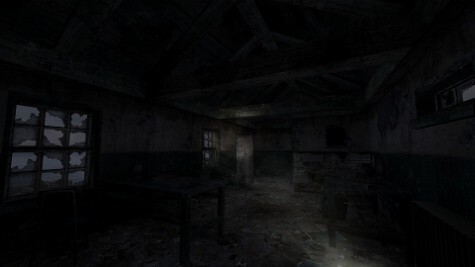Dear Esther – What We Think:
Dear Esther is, quite simply, a sublime inspiration in experiential gameplay. It is also a game that is slippery to define because of its complexity. I have read many reviews which have talked about interpreting the poetry of the game, kind of in the same way that one might try to interpret the motivations behind an arthouse film.
Dear Esther certainly appeals to that sort of audience – one that is open to diving into poetry; Poetry that is awash with sounds and sights, in a manner that language and symbolism become a continual, recursive feedback loop. The game mechanics herein are restrained, while fastidiously progressive in how they are reimagined to serve partially randomized realtime environments as a narrative medium.

The game was created in 2008 as a research project by the studio that created thechineseroom at the University of Portmouth, UK, as a Source Engine mod. The research aimed to find new ways to use First Person Gaming for storytelling. Its remake by thechineseroom, in partnership with Robert Briscoe, was meant for commercial release and added the full splendor of HD graphics, crisp art direction, and remastered sound.
As the player, one has simply the WASD at their disposal and the ability to zoom in ever so slightly with a LMB click. Greeted with an idyllic setting of overgrown grasses upon the shore, mediated with the melody of classical strings, the game’s implicit encouragement to explore the environment lends a ready impulse to believe that there are mysteries behind every building and blade of grass.
Once in a while, an invisible protagonist speaks – sometimes of the hills you’ll soon come across, sometimes of spiritual pilgrimage, and other times of what seems to be memories. Of the mystery that surrounds this so-called Esther.

The game design that situates us so utterly in an unfiltered environment, while permitting narrative secrets to seep through over time, caught the attention of a number of indie game development heavyweights. Developers and artists such as Jonathan Blow (Braid), Ron Carmel (World of Goo), and Jonathan Smars (Battlefield: Bad Company, Nuclear Dawn) loaned their support to the commercial remake of Dear Esther. I would suggest that it was this conscious design decision that made this game so critically compelling: a game design that gave the player infinitely more to ponder over than just the lines that were spoken, or the vistas that were seen – to create a much more holistic experience that lasted long after the game’s runtime.

I cannot shake the thought that Dear Esther is meant for open interpretation, and thus difficult to review though this is why I have restrained myself from giving a full disclosure of my interpretation because it may very well ruin it for those who haven’t yet enjoyed the game. This ethos in game design is a pattern that we have recognized in other recent titles like Benjamin Rivers’ Home and Brendan Chung’s Thirty Flights of Loving [editor’s note]. As a player, you are to build your own experiences around and from within it: for all that the protagonist remains unseen, but continually narrates his progression through space, you feel intimately tied to what he sees and feels.
Even as he investigates the source of his suffering, our own world-view on the fairness of suffering similarly colors our senses in how the game affects us. Herein lies the brilliance of Dear Esther – it doesn’t pass judgment on what is suffering, or ill fortune – the game only presents what is and what has been felt about what has transpired, and allows us pull together the pieces towards how we want to feel as the result.
Indeed, do landscapes feel and look different depending on one’s psychological disposition? Dear Esther suggests as much, as everything moves in the landscape of the game and captures our attention: the wildflowers to the breeze, rushing streams, and pockets of light bouncing off of stalactites, all of it suggests a vector that seem nearly anthropomorphic. My skin has goosebumps when I, in first-person mode, run too close into a claustrophobic fold of the cliff rock.

The developers have rid the game of any HUD or real interface, allowing us to examine the 3D world without a filter and having observation as our only range of interaction. The result is that I am drawn in phenomenologically, that is to say, all of my senses engaged with the cues in the landscape and in the sounds. And, given the game’s outstanding artistic direction, it could be said that taking in the landscape without the pressure of a time constraint is on its own an experience worth investing in.

Dear Esther asks many questions, but they are of the type that are tempered by your own disposition. In my case, the one that stays with me is whether one can have knowledge of religion and have mastery over language, and still consider his fate unfair. For, at some primordial level, humans have learned religion and language to try to reorient their fates to their liking. What does that self-reflecting voice and landscape postulate about this question? I’ll let that one hang in the air.
In demonstrating that less is more, and that games can be unreservedly poetic, and for the fact that one walk-through will not deliver the full range of possibilities available here, I recommend Dear Esther as a an opportunity to experience something that will linger in the imagination long after its apparent conclusion.
Get Dear Esther on Steam
[xrr rating=”5/5″]
[youtube http://www.youtube.com/watch?v=D7VJ4lP-05A?rel=0&w=490&h=276]





